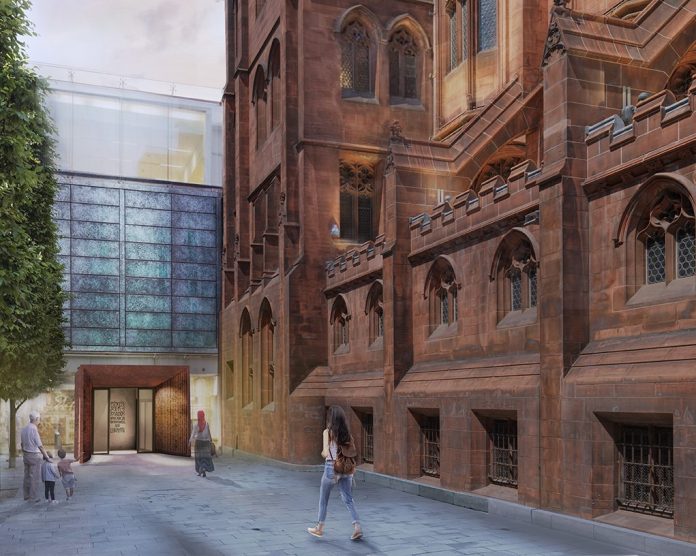Manchester City Council has approved plans to transform The University of Manchester’s John Rylands Research Institute and Library to enhance its contribution to research, student experience and public engagement.
The £7.6m project, named John Rylands Next Chapter, forms a part of the Library’s Imagine2030 vision.
The proposed designs, drawn up by conservation architecture practice Donald Insall Associates, utilises a single design language that speaks to the building’s evolution through the 1890s, 1920s, 1960s and 2000s. It will deliver an updated exhibition space (designed by Nissen Richards Studio), an advanced imaging laboratory, a flexible event space and a refreshed main entrance.
The Grade I-listed Rylands is one of the finest neo-Gothic buildings in Europe, housing internationally important collections of rare books, manuscripts, and archives.
The building has survived a turbulent history: two world wars, the disappearance of the Lancashire cotton industry, post-war modern planning and the changing fortunes of the city. The consented scheme aims to sensitively protect and evolve one of Manchester’s most important and best-loved buildings.
The Rylands is expected to remain open throughout the project, with areas closing as required while redevelopment takes place.
Professor Christopher Pressler, John Rylands University Librarian and Director of The University of Manchester Library, said: “The Rylands is one of the great libraries of the world. I am tremendously proud to lead this remarkable institution, as we approach our 125th anniversary in 2025. The Next Chapter project will deliver world-class facilities for research and engagement, of a quality to match our extraordinary collections and building. It will equip the Rylands to address the many challenges and opportunities of the mid-21st century, and it will reinforce the Rylands’ importance to the University, the city of Manchester, and world heritage.”
Rory Chisholm, Associate Architect, at Donald Insall Associates said: “The significance of the Rylands lies not only in its graceful architecture, but in its life as a thriving research library. We have developed a design that acts as a unifying gesture; threading together the many layers of the Rylands’ architectural history, whilst also better connecting visitors with the many uses of the building.







